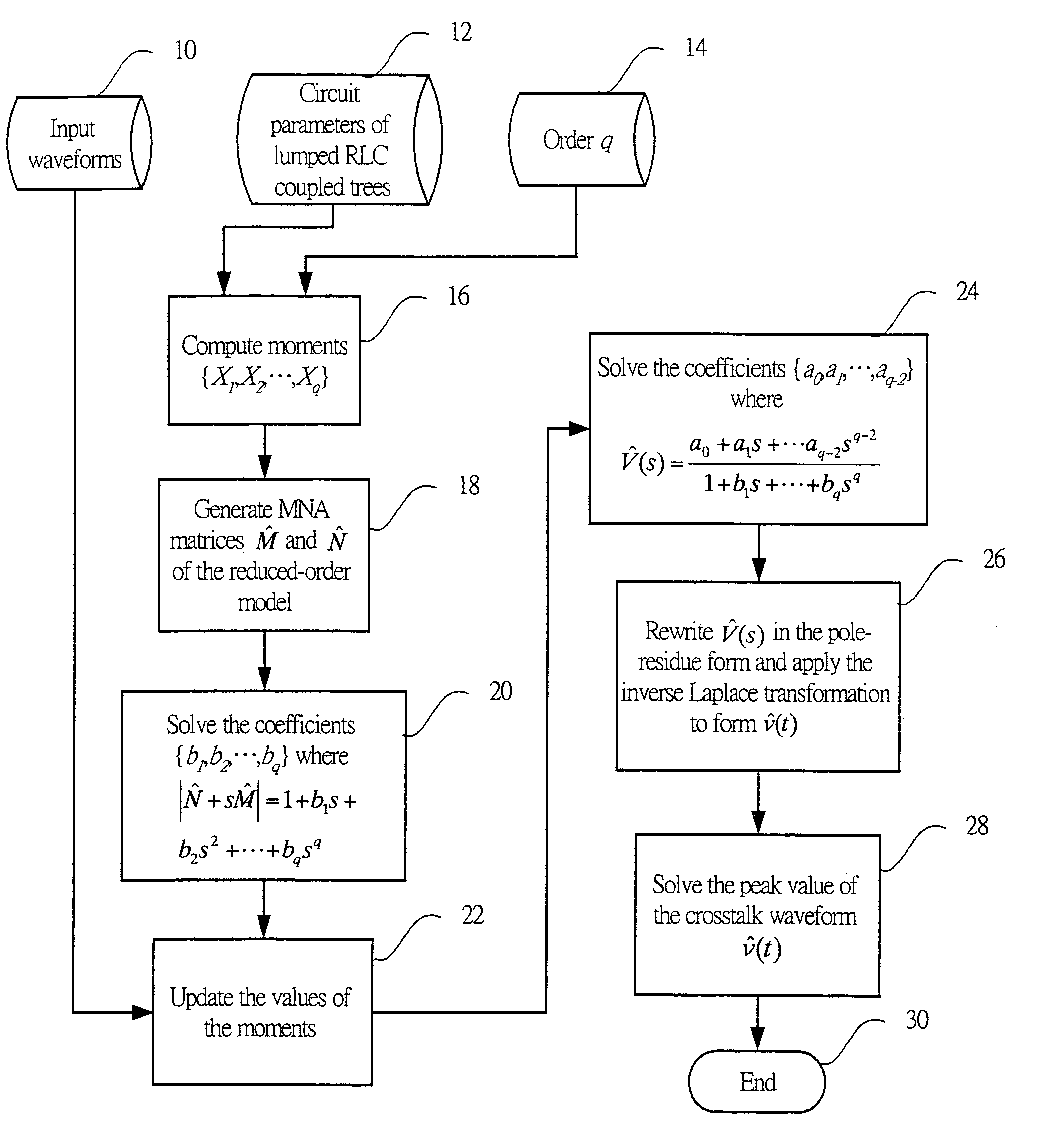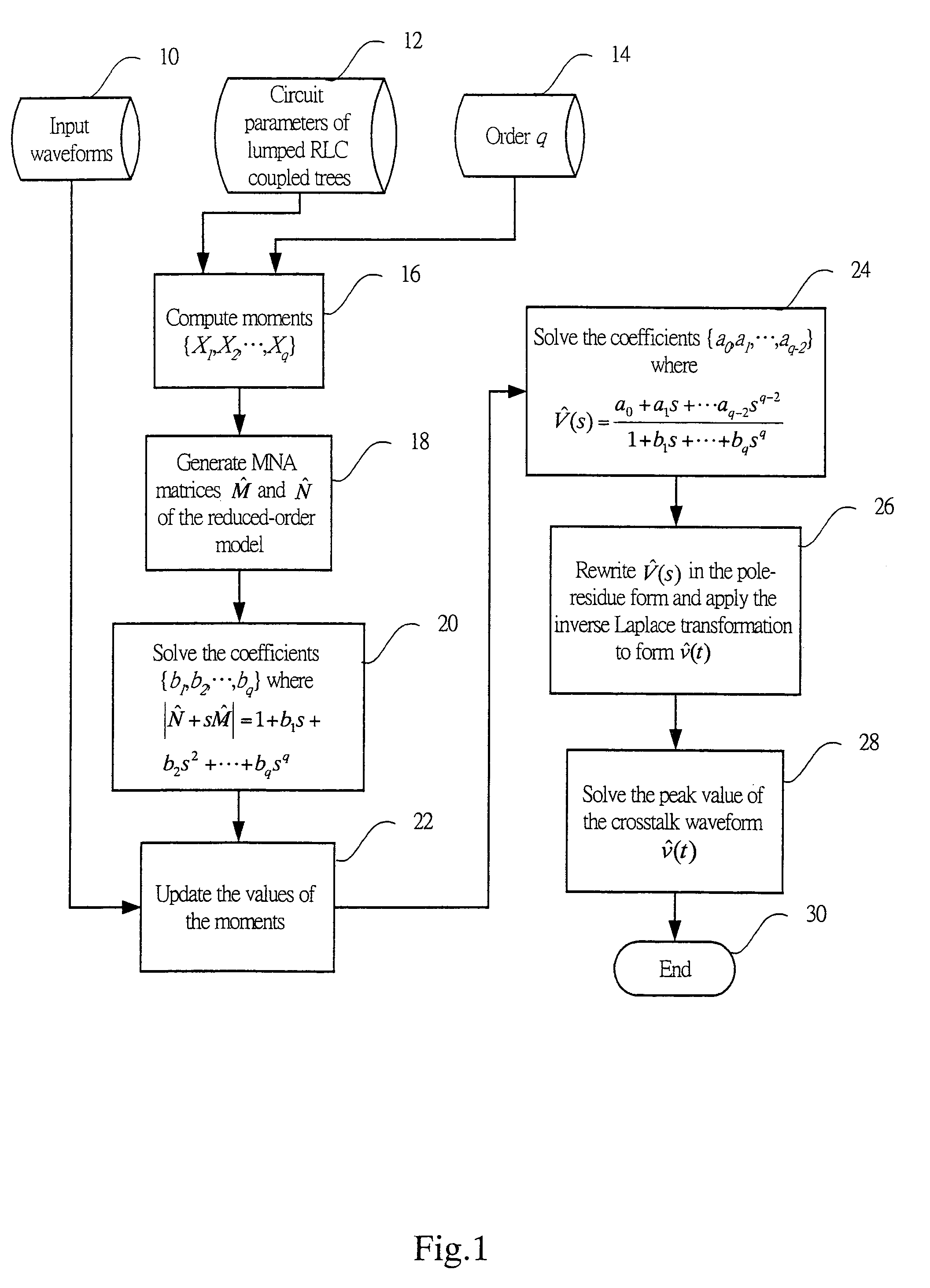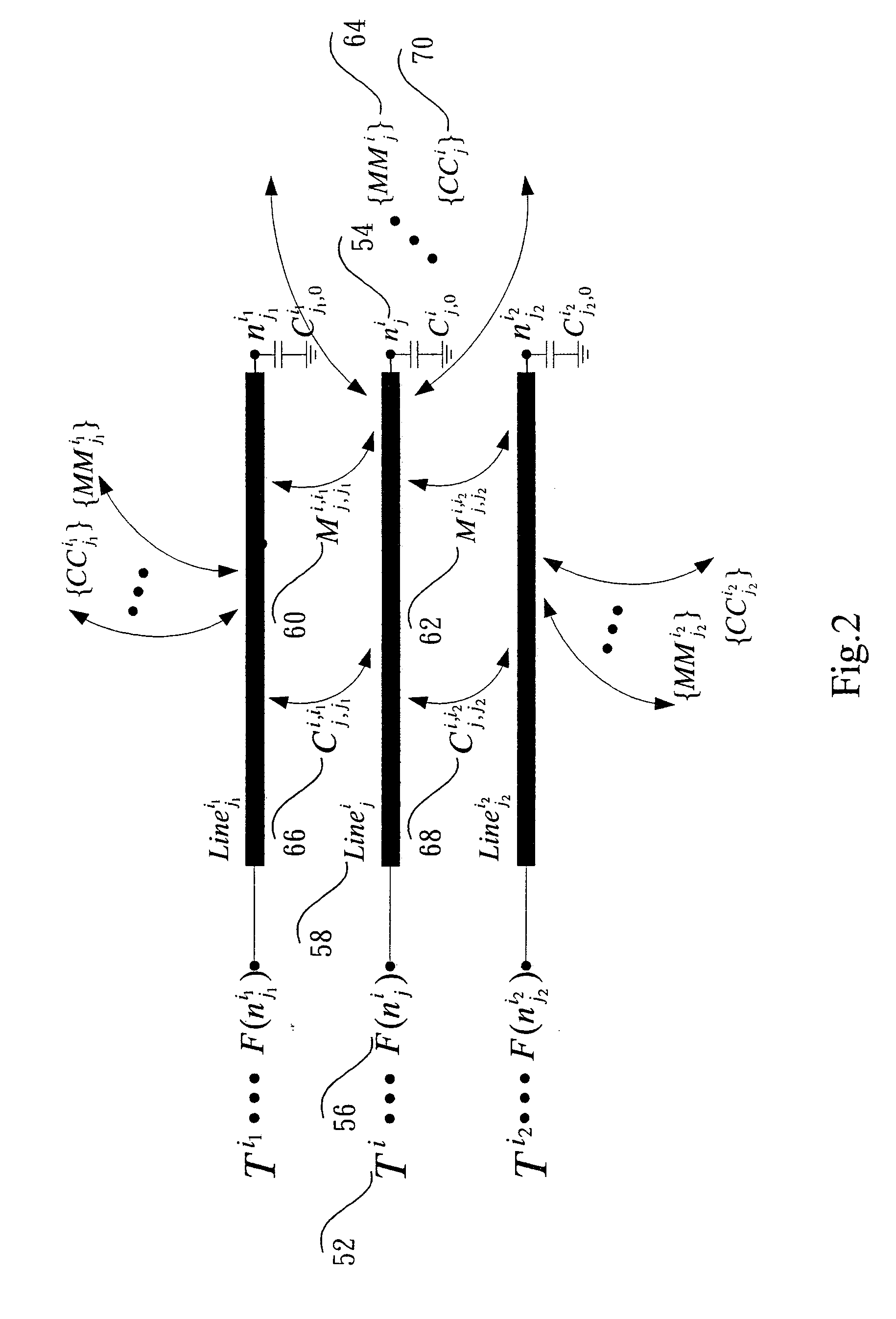Method of verification of estimating crosstalk noise in coupled RLC interconnects with distributed line in nanometer integrated circuits
a distributed line and integrated circuit technology, applied in the field of high-speed vlsi interconnects, can solve the problems of large current changes on the victim nets, inability to ignore on-chip inductance effects in interconnect models, and excessive computational complexity, so as to improve efficiency and accuracy of moment computation, accurately estimate, and efficient estimate
- Summary
- Abstract
- Description
- Claims
- Application Information
AI Technical Summary
Benefits of technology
Problems solved by technology
Method used
Image
Examples
Embodiment Construction
[0017]FIG. 1 shows the flow chart of the crosstalk estimation algorithm in the disclosed invention. Three input files should be included, which contain input signal 10, circuit parameters of the lumped coupled RLC trees 12, and the order q of the reduced-order model 14. Initially, in step 16, calculate q-order moments {X1,X2, . . . Xq}. Then, in step 18, construct q-order reduced-order MNA matrices {circumflex over (M)} and N. In step 20, calculate the coefficients {b1,b2, . . . ,bq} of the equation |{circumflex over (N)}+s{circumflex over (M)}|=1+b1s+b2s2+ . . . +bqsq. Step 22 updates the values of the moments according to the input signal. Step 24 calculates the coefficients {a0,a1, . . . ,aq−2} of the transfer function of the qth-order reduced-order model V^(s)=a0+a1s+…+aq-2sq-11+b1s+…+bq-1sq-1+bqsq
by using the moments obtained in step 22. Then {circumflex over (V)}(s) is reformulated by the pole-residue form V^(s)=k1s-p1+k2s-p2+…+kqs-pq
and the resultant time-domain crosst...
PUM
 Login to View More
Login to View More Abstract
Description
Claims
Application Information
 Login to View More
Login to View More - R&D
- Intellectual Property
- Life Sciences
- Materials
- Tech Scout
- Unparalleled Data Quality
- Higher Quality Content
- 60% Fewer Hallucinations
Browse by: Latest US Patents, China's latest patents, Technical Efficacy Thesaurus, Application Domain, Technology Topic, Popular Technical Reports.
© 2025 PatSnap. All rights reserved.Legal|Privacy policy|Modern Slavery Act Transparency Statement|Sitemap|About US| Contact US: help@patsnap.com



